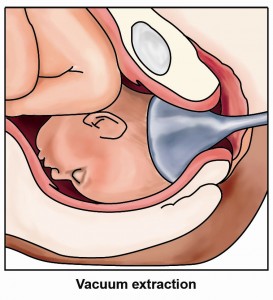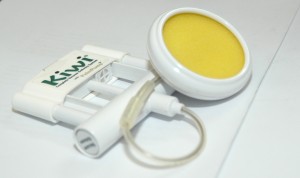Vacuum Delivery
What does ventouse delivery means?
The ventouse or vacuum extractor is a metal or silicone cup which is placed on the baby’s head. It uses gentle suction to help your baby out of the birth canal. It was invented by James Simpson in 1840 and has been widely used in obstetric practice.
Ventouse are used in a small percentage of deliveries and is safe if used correctly by experienced practitioner
Ventouse are used during the second stage of labour when the cervix is fully dilated. This instrument is considered when a laboring mother is exhausted, or if she has a medical condition (e.g. heart disease or high blood pressure) whereby shortening of second stage of labour is of benefit to her. Sometimes, ventouse is used when the baby is showing signs of distress and need to be delivered in a hurry. When a baby is in a position that makes it more difficult for the laboring mother to push the baby out, then ventouse may be indicated to rotate the baby’s head
 The laboring mother’s bladder has to be completed empty, the water bag has to be ruptured before the ventouse is used. After the ventouse extractor is placed securely onto the baby’s head, your practitioner will wait for a contraction to happen before he/she applied traction. You could facilitate the delivery by giving a good push while your practitioner applied traction to guide your baby down the birth canal
The laboring mother’s bladder has to be completed empty, the water bag has to be ruptured before the ventouse is used. After the ventouse extractor is placed securely onto the baby’s head, your practitioner will wait for a contraction to happen before he/she applied traction. You could facilitate the delivery by giving a good push while your practitioner applied traction to guide your baby down the birth canal
Compared to forceps delivery, ventouse deliveries are associated with lesser trauma to the birth canal and possibly a lower chance of having an episiotomy. However, it is more likely to fail compare to forceps delivery and hence leading to emergency Caesarean section. The babies born with ventouse extractor may experience some swelling or bruising on the scalps, but it usually go away within a few days without any treatment. Sometimes the baby may have a blood blister on his/her scalp (cephalhaematoma). This may take up to 8 weeks to dissolve and it does not cause injury to the baby’s brain.
What are the advantages of ventouse delivery?
- You may be able to avoid a Caesarean section and problems associated with the procedure
What are the disadvantages of ventouse delivery?
- It is less natural
- The woman is more likely to need stitches for a vaginal tear or an episiotomy
- Increased risk of damage to the muscle surrounding the anus (back passage)
- Bruises to the baby’s scalp/ face, which will fade within days
RECOMMENDED BOOKS
[easyazon-image align=”none” asin=”B008LW1KBW” locale=”us” height=”160″ src=”http://ecx.images-amazon.com/images/I/517n98O8GsL._SL160_.jpg” width=”120″] [easyazon-image align=”none” asin=”B003RBPEVO” locale=”us” height=”160″ src=”http://ecx.images-amazon.com/images/I/418CxsD4AqL._SL160_.jpg” width=”113″] [easyazon-image align=”none” asin=”B000AM24E8″ locale=”us” height=”146″ src=”http://ecx.images-amazon.com/images/I/51F83BWATKL._SL160_.jpg” width=”160″] [easyazon-image align=”none” asin=”1558323570″ locale=”us” height=”160″ src=”http://ecx.images-amazon.com/images/I/51XGg5qQ1wL._SL160_.jpg” width=”107″]
REFERENCES:
Operative Vaginal Delivery. Royal College of Obstetricians and Gynaecologists, UK. The Green-top Guideline No.26








